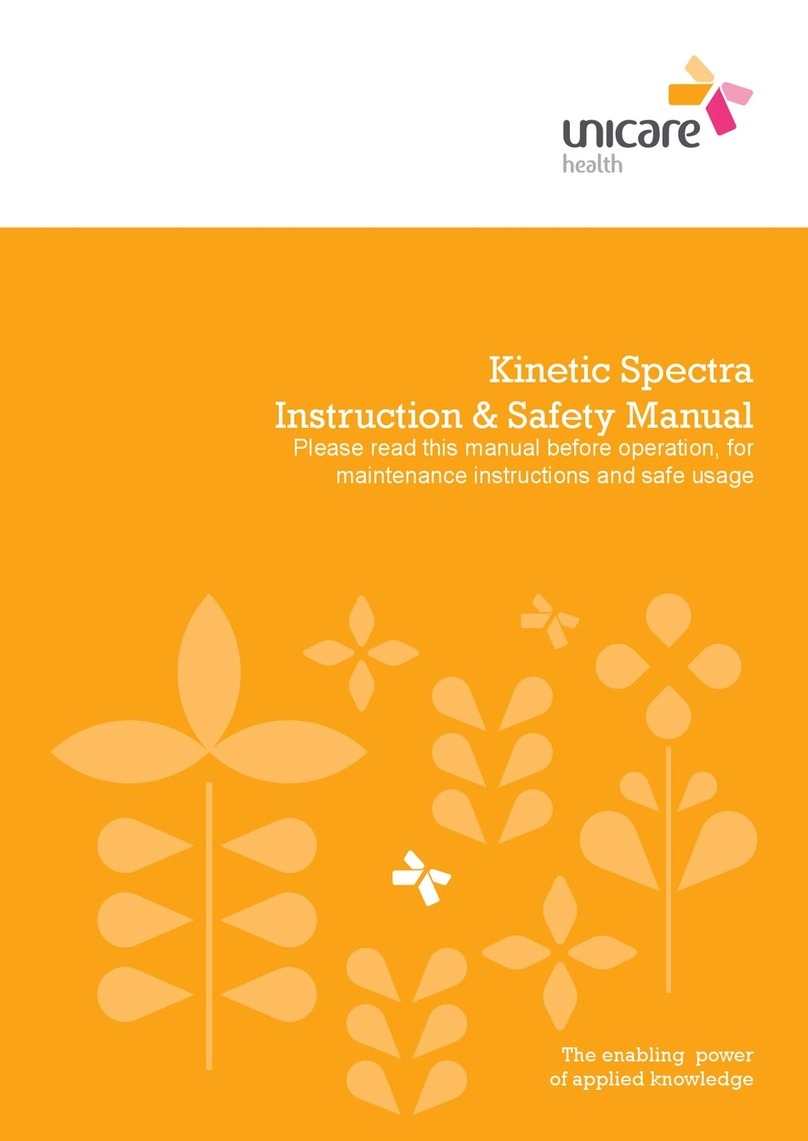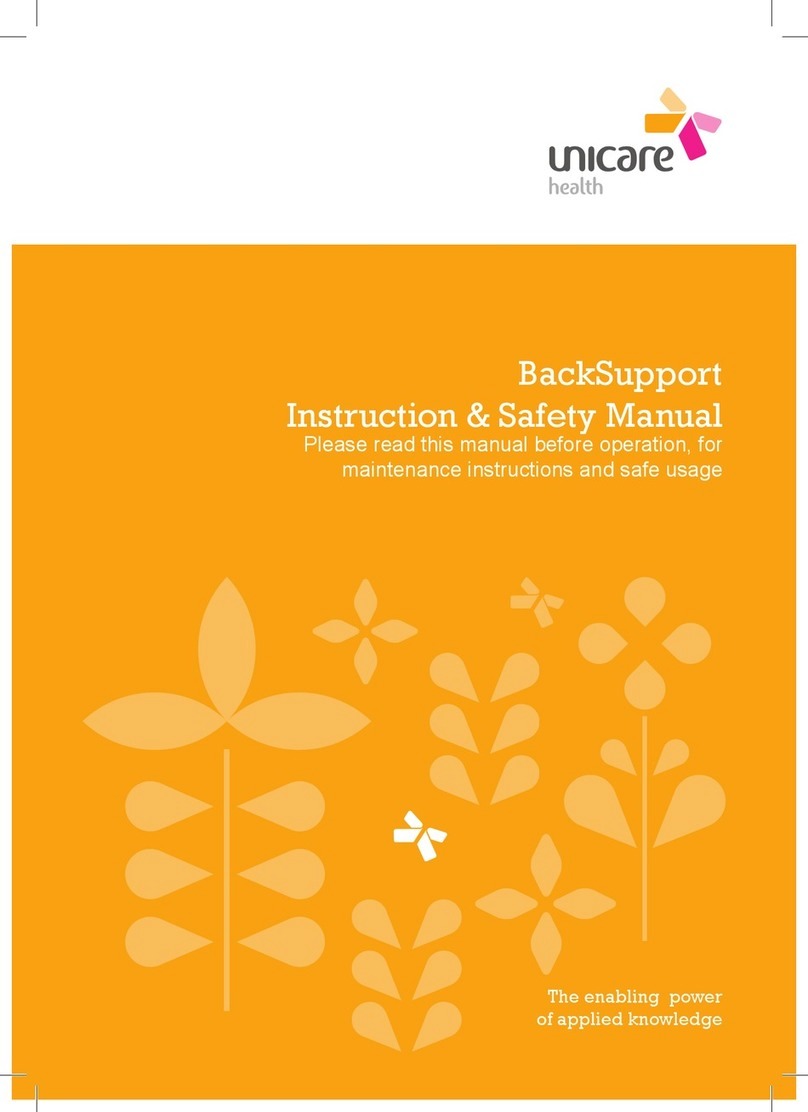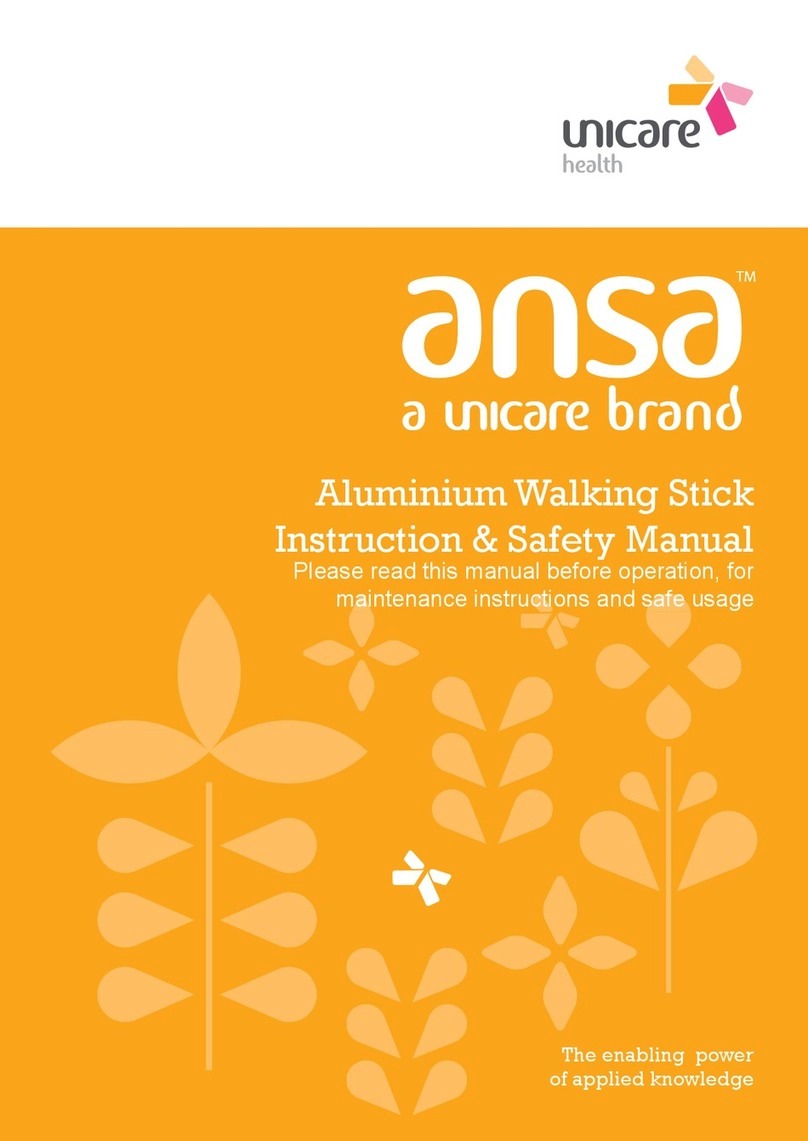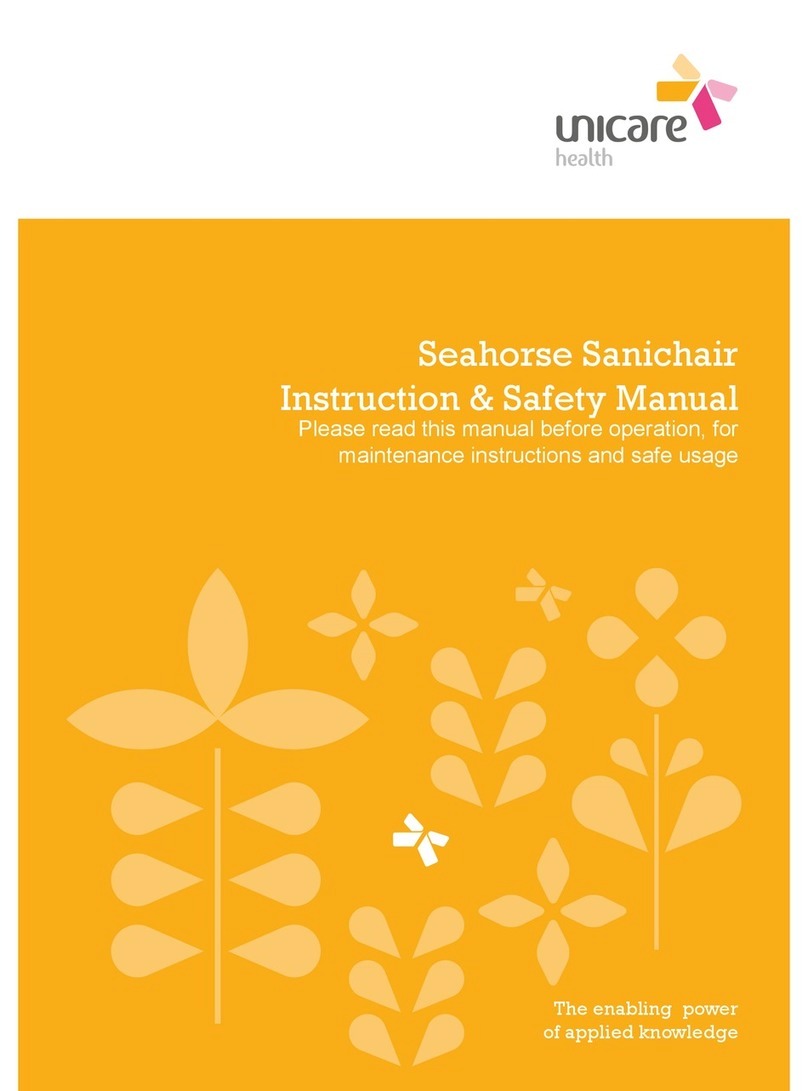4
ALTO LIFT 200, Instruction & Safety Manual
Assembly Instructions
Sonata 1500 & Alto Lift 200
All the Unicare Health range of patient lifting and transfer hoists are fully assembled, load tested and
certifi ed at the factory before being partially dismantled for packing and shipping.
Use the instructions below as a guide to assemble your SONATA or ALTO hoist.
1. Remove lifter components from protective packing and lay out on a smooth surface to prevent
damage to powder coating on lifter sub assemblies.
2. Lift the mast assembly and slide into mast holder receiving socket on base chassis. Ensure the
mast assembly is completetly engaged in the mast socket. Tighten the locking clamp hex bolt to
prevent movement between mast and base chassis .
3. Attach lift actuator to jib ,by aligning actuator clevis with actuator mount bracket. Insert bolt and
tighten nylock nut.
4. Attach push handle assembly with hex bolts and washers supplied with handle assembly.
5. Insert the leg adjusting handle into the socket of leg adj. pivot mounted on base chassis. Ensure
handle key is aligned with cut outs on pivot.
6. Check the operation of the leg adjustment mechanism to ensure the adjuster handle engages the
three detent positions with ease of movement.
7. Attach control box to mount plate with M5 hex bolt. Then attach clip on battery pack.
8. Plug the lift actuator cable into port 1 positioned on the underside of the control box, ensuring it is
driven fi rmly home in the socket.
9. If your Unicare Health hoist uses an electric leg adjustment, plug the leg actuator lead into port 2 n
the underside of the control box.
10. Plug the handset lead into the large socket on underside of control box.(diagram 2) ensure
alignment of tongue on handset plug with groove in control box handset connection port. when
aligned press home fi rmly. A smear of Vaseline on the o ring may assist if plug is tight.
11. Check operation of lifter via handset , ensuring that the RED EMERGENCY STOP BUTTON ON
THE CONTROL BOX IS RELEASED. Turn the knob quarter turn clockwise to release.
































